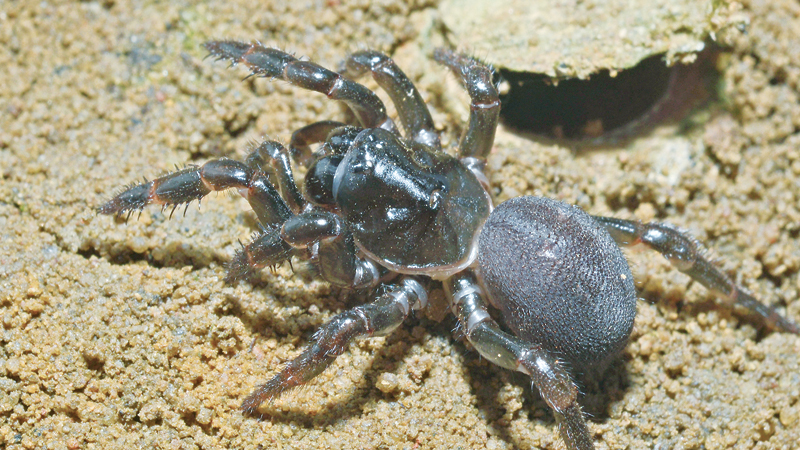

A species of spider that usually travels no further than a few feet from where it was hatched, likely made an epic sea journey on a “land raft” from South Africa to call Australia home, a study said on Thursday.
The Australian trapdoor spider, known scientifically as Moggridgea rainbow, is only found on Kangaroo Island off the south Australian coast and lives a sedentary land-based lifestyle, rarely moving far.
Research in the journal PLOS ONE said DNA sequences shows it actually belongs to a genus of trapdoor spiders otherwise found only in South Africa and split from its closest relatives between two and 16 million years ago.
“Conventional wisdom had suggested the spiders became split from their South African relations with the separation of Africa from Gondwana around 95 million years ago,” said University of Adelaide researcher Sophie Harrison.
“But our research showed that the divergence of Moggridgea rainbow from African Moggridgea trapdoor spiders occurred sometime between two and 16 million years ago, well after the Africa-Gondwana separation.”
The timing — established using “molecular clock” dating technology — also rules out the alternative theory that they arrived with humans, who set foot in Australia much later.
This leaves long-distance travel across the Indian Ocean as the only other logical explanation, the study said.
“At first thought, this does seem incredible,” said Andrew Austin, from the same university. “But there are precedents of such ocean travel. Moggridgea (a separate species) are also found on the Comoros volcanic islands, 340 kilometres from mainland Africa.
“However this is a relatively short distance compared with the 10,000 kilometres from South Africa to Kangaroo Island.” The research suggested a colony could have made the trip on a large chunk of land and vegetation washed out to sea.
“The burrows they live in are quite stable and they would have been quite secure in their silk-lined tubes with their trapdoors closed — it was probably quite a safe way to travel,” said Harrison.
The spider lives in banks close to the ocean on Kangaroo Island with the mother laying her eggs in a burrow which, when the conditions are right, then hatch.
They move a couple of metres, set up their own burrows, and stay there for the rest of their lives, lunging out of their trapdoors at night to catch passing prey. — AFP
Oman Observer is now on the WhatsApp channel. Click here



